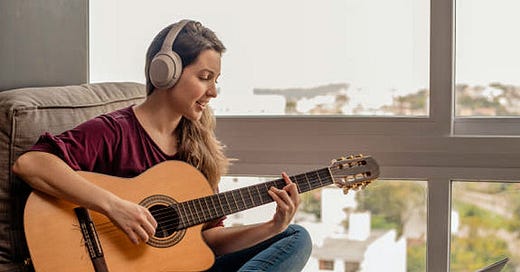Nobody ever said that learning how to play the guitar well, is easy. It most certainly isn't impossible, but you do have to work for it. This means that you need to be stronger than your excuses. Sitting on beginner "cowboy" chords, just because they’re easy, does not mean that barre chords are somehow less important. Quite the contrary. In fact, they a…
Keep reading with a 7-day free trial
Subscribe to SoundHole Guitar Lessons to keep reading this post and get 7 days of free access to the full post archives.





